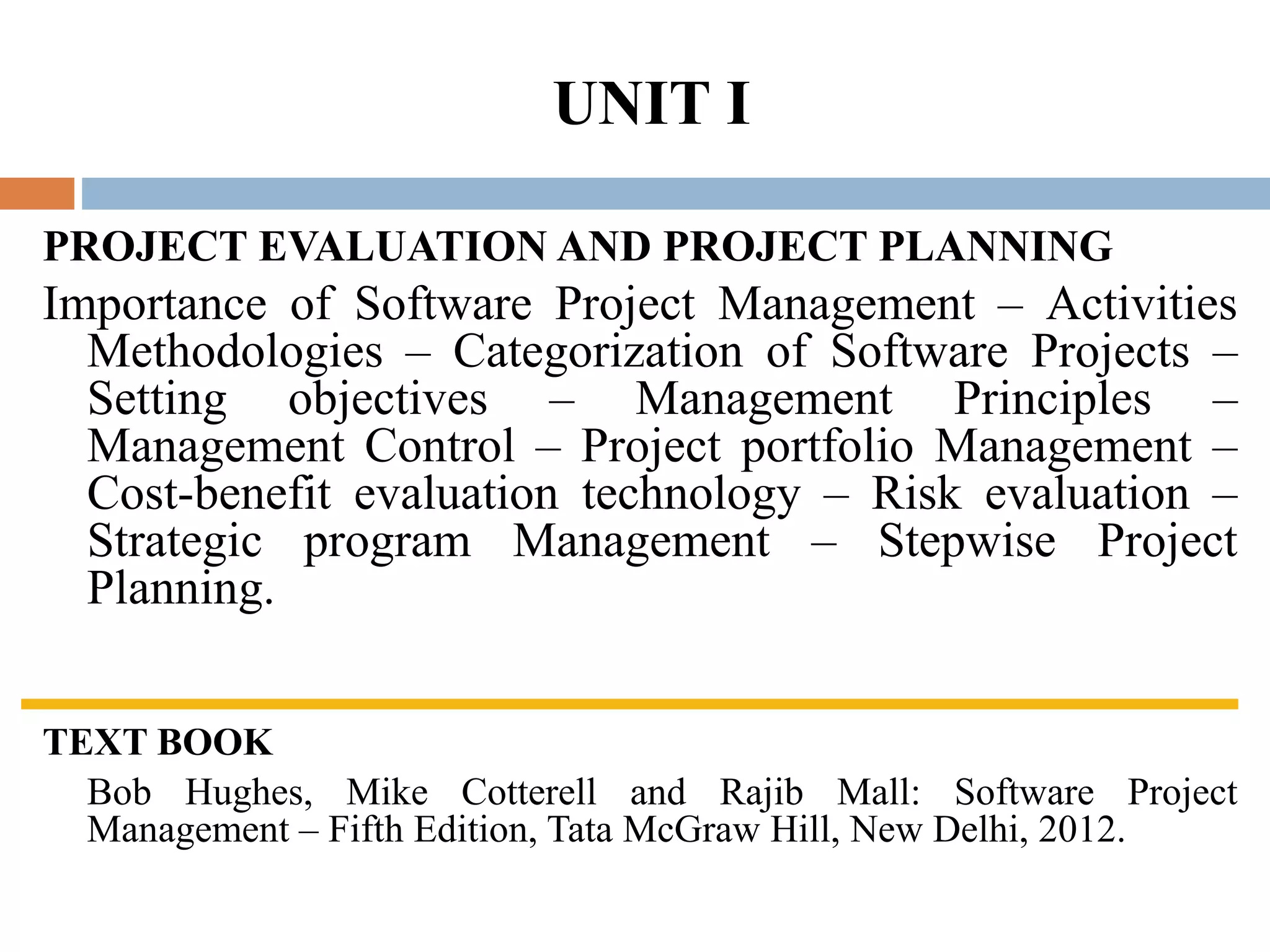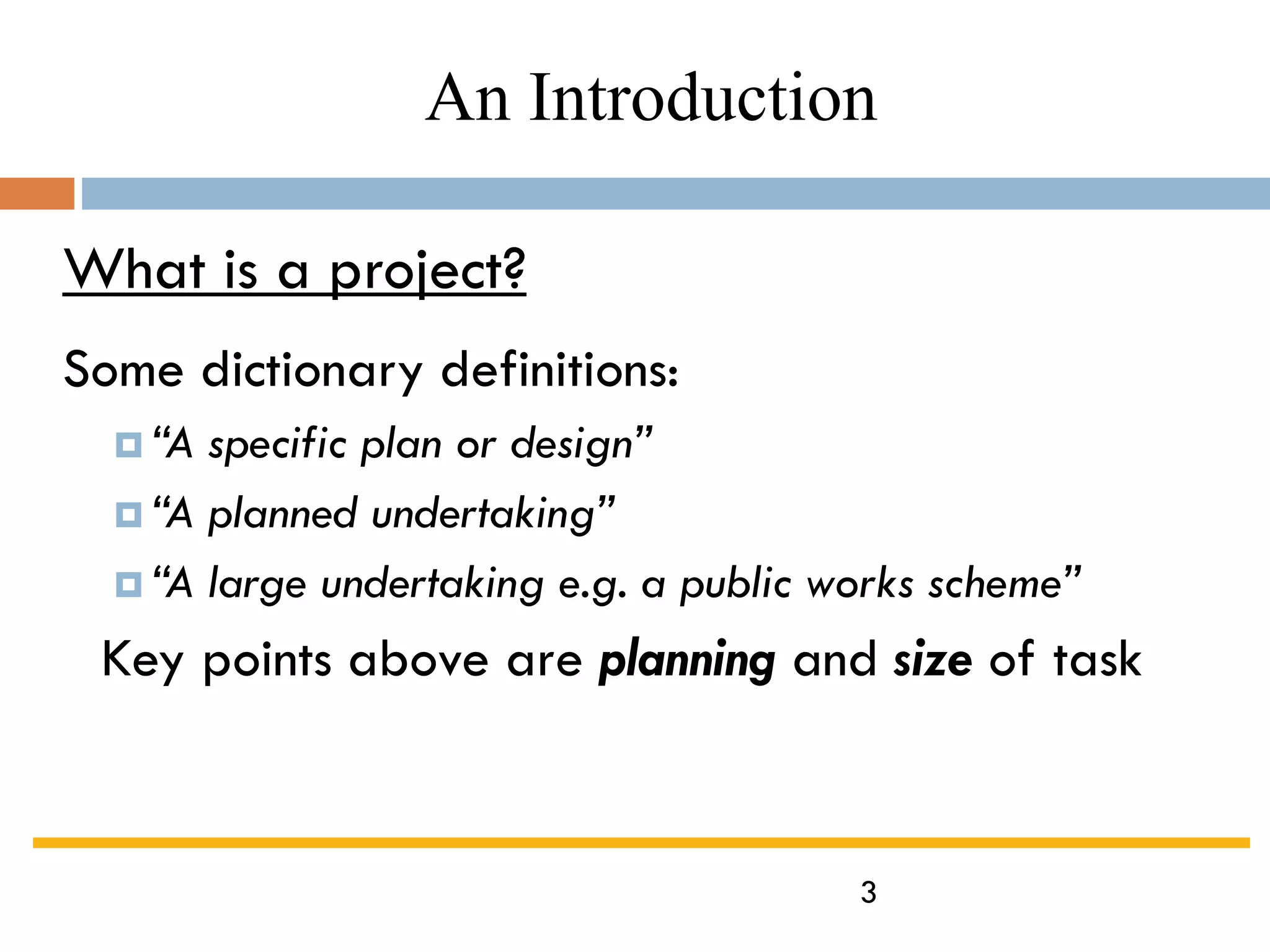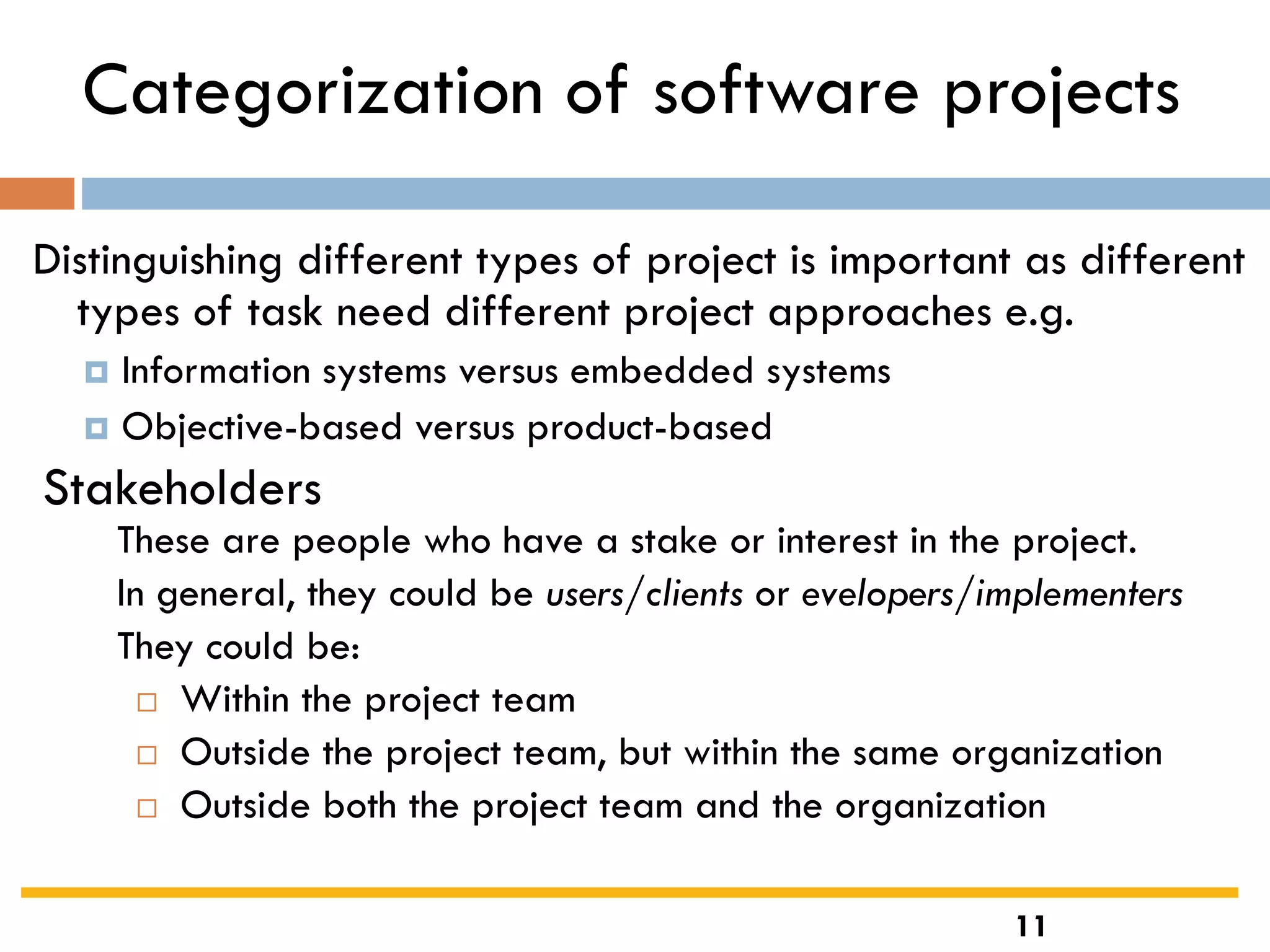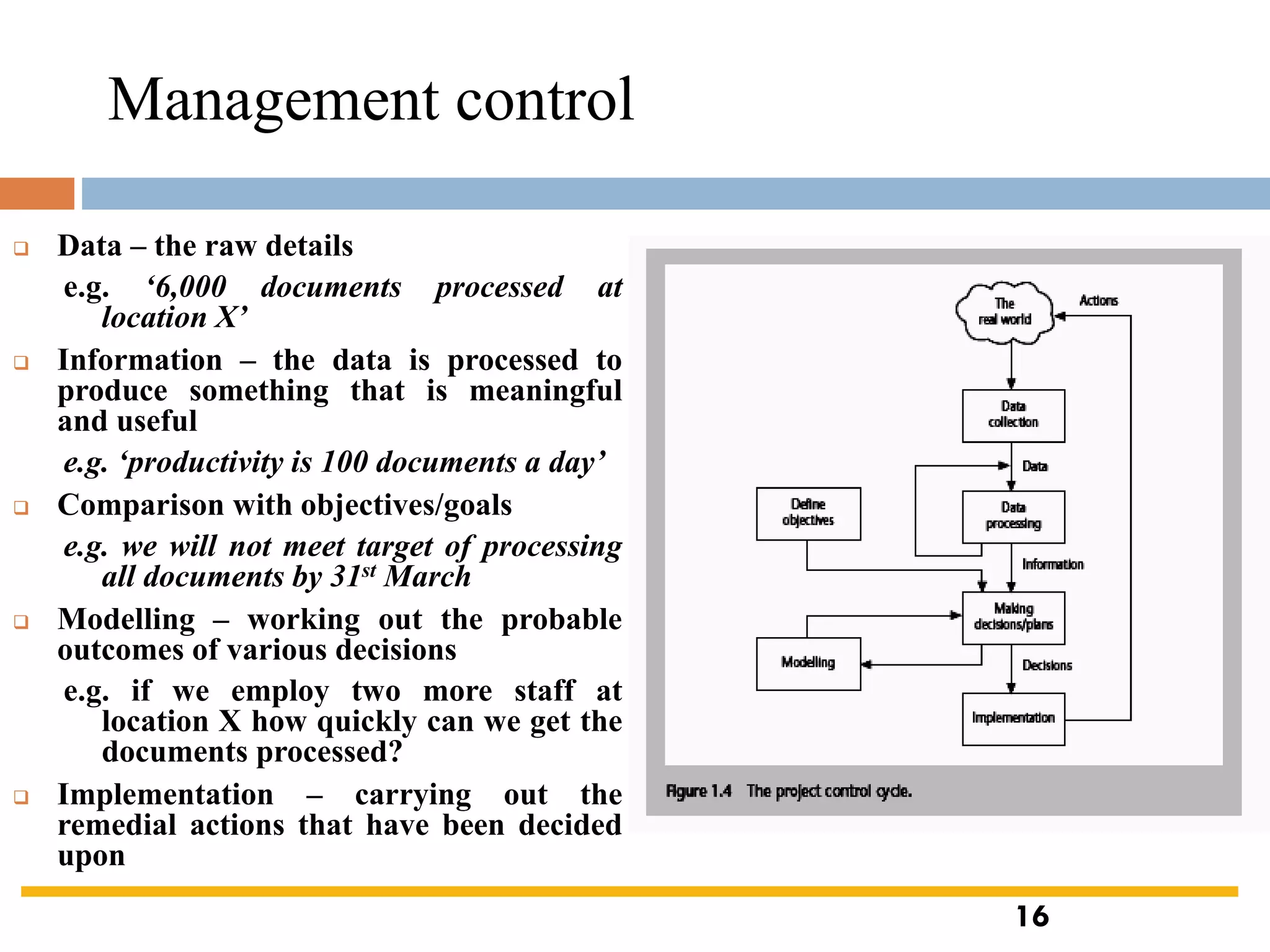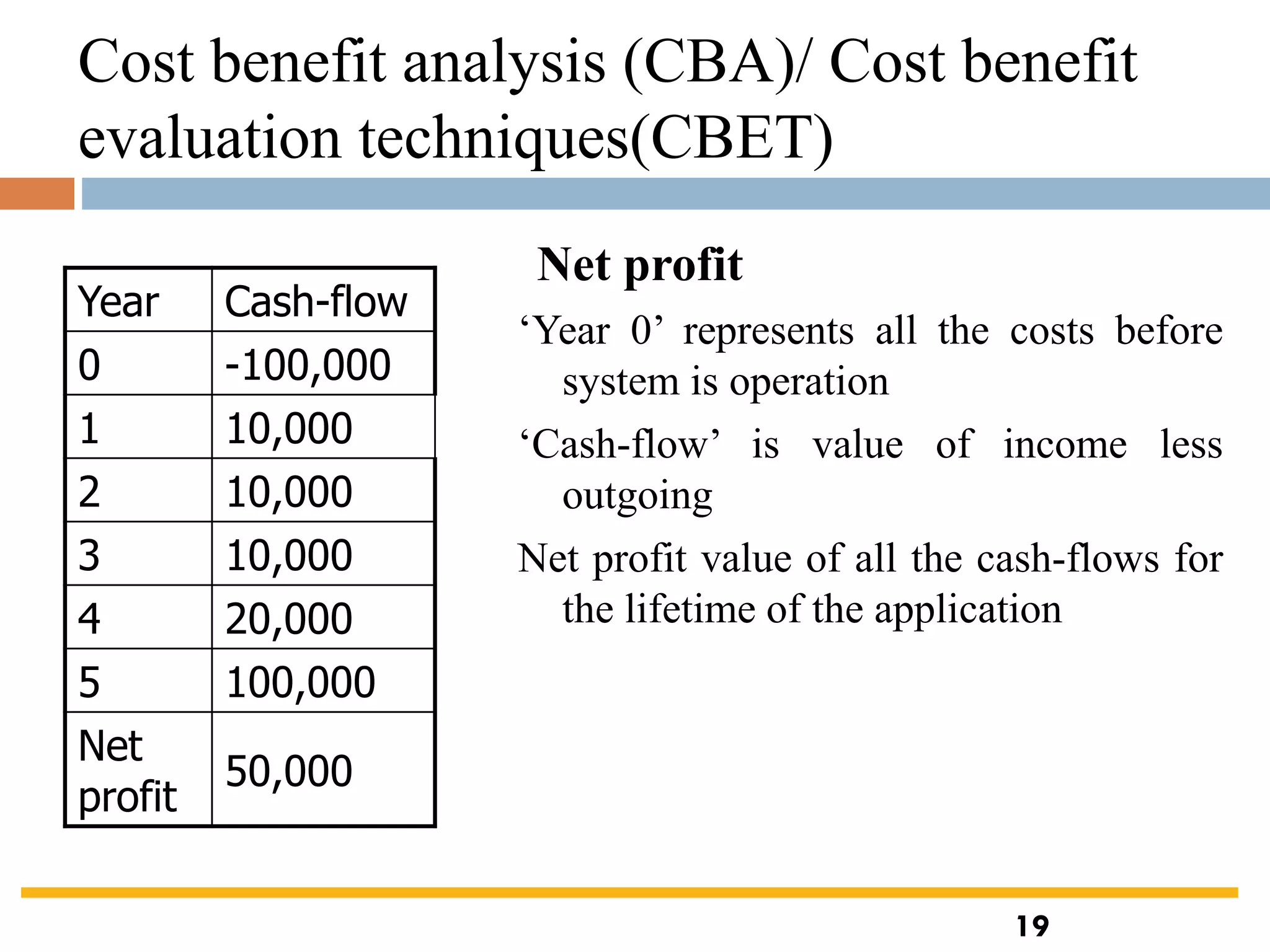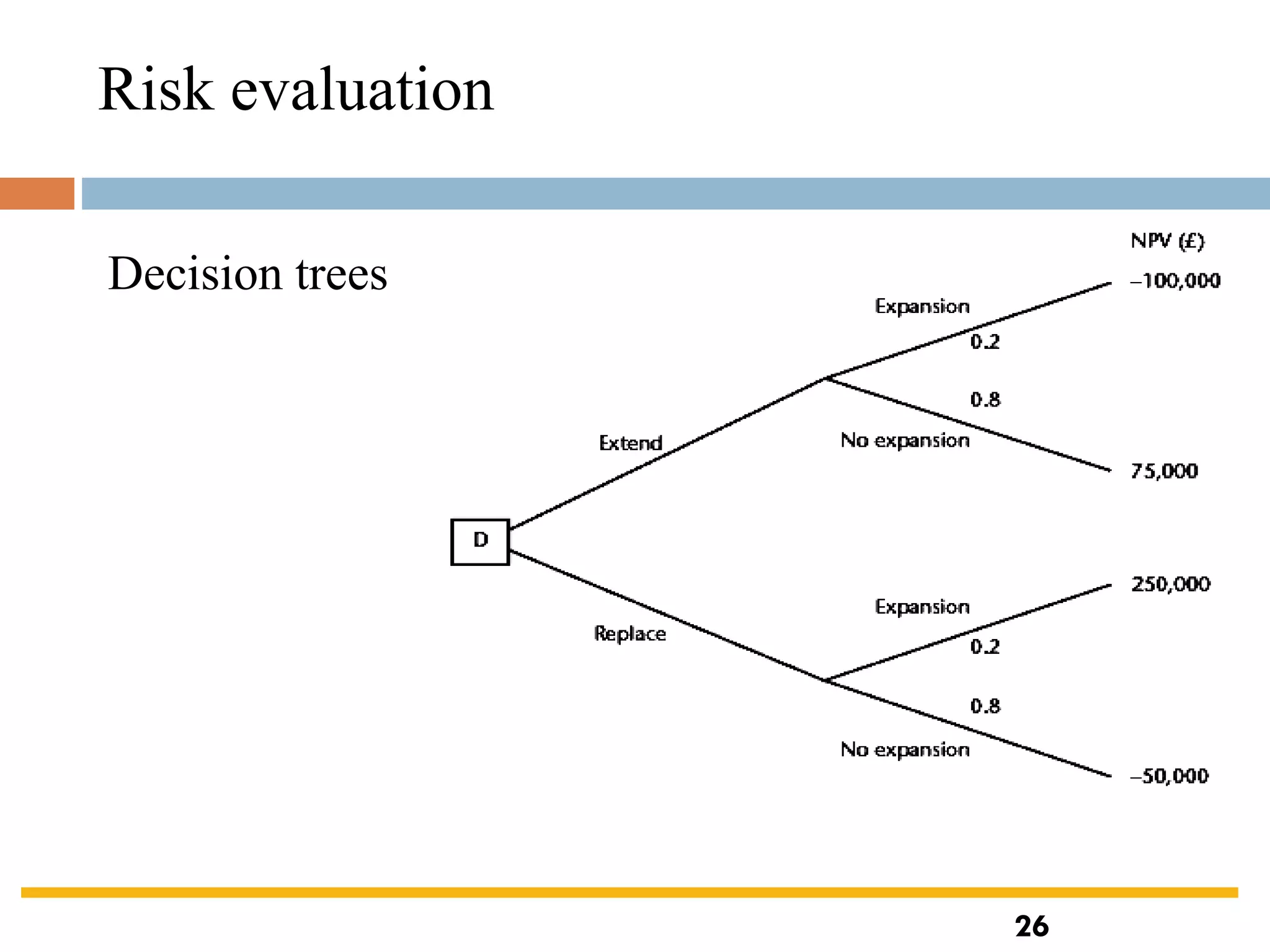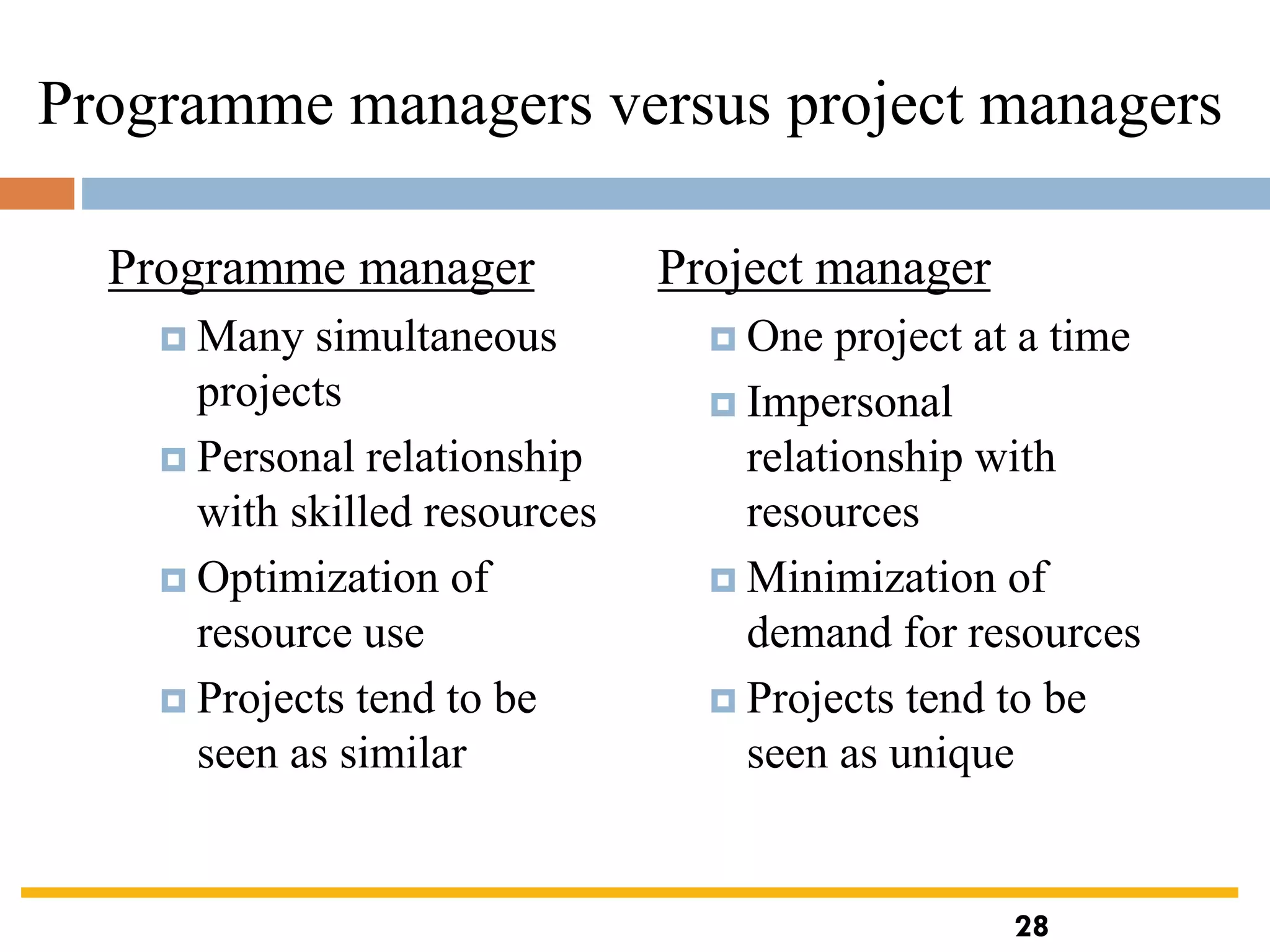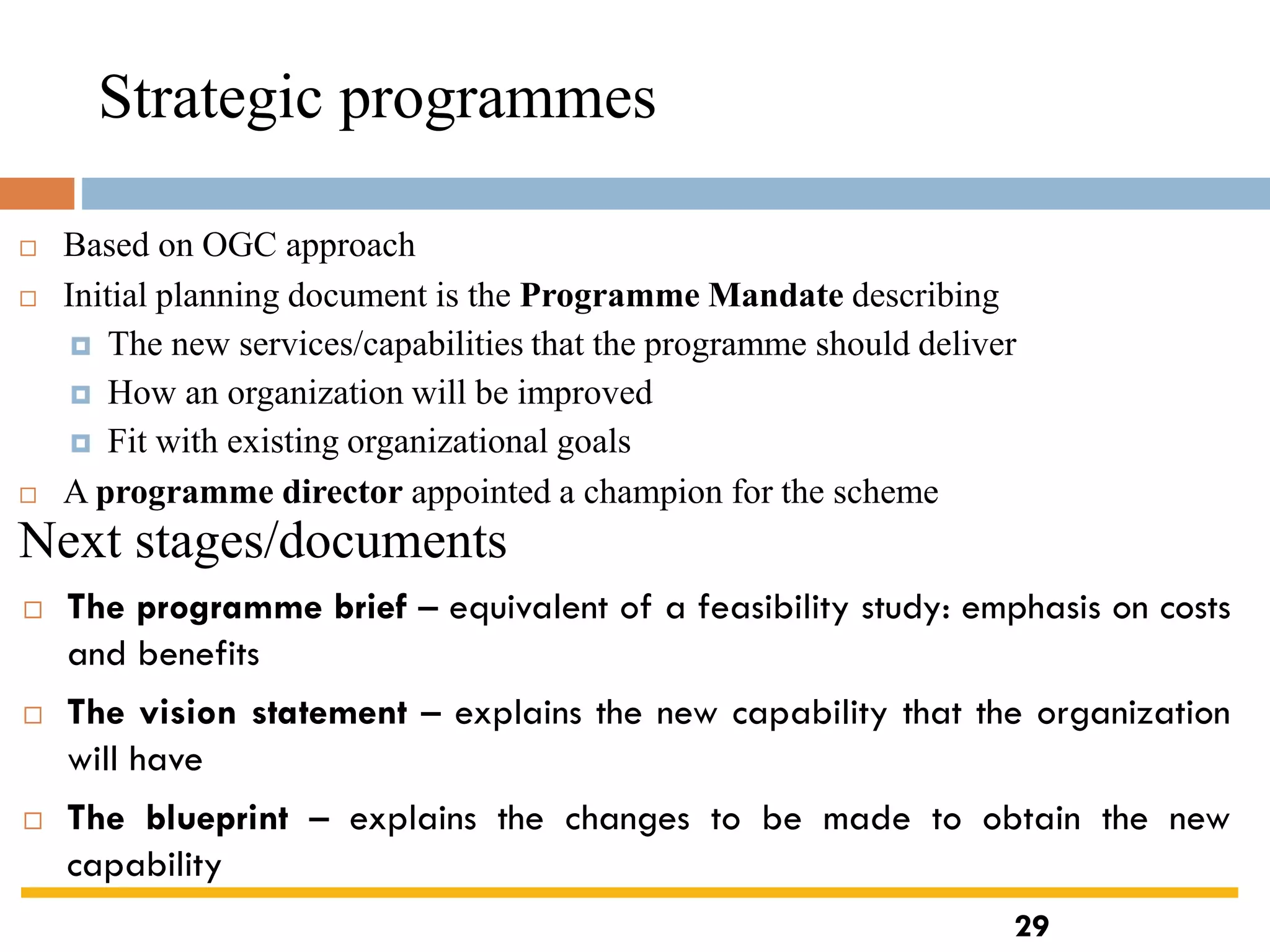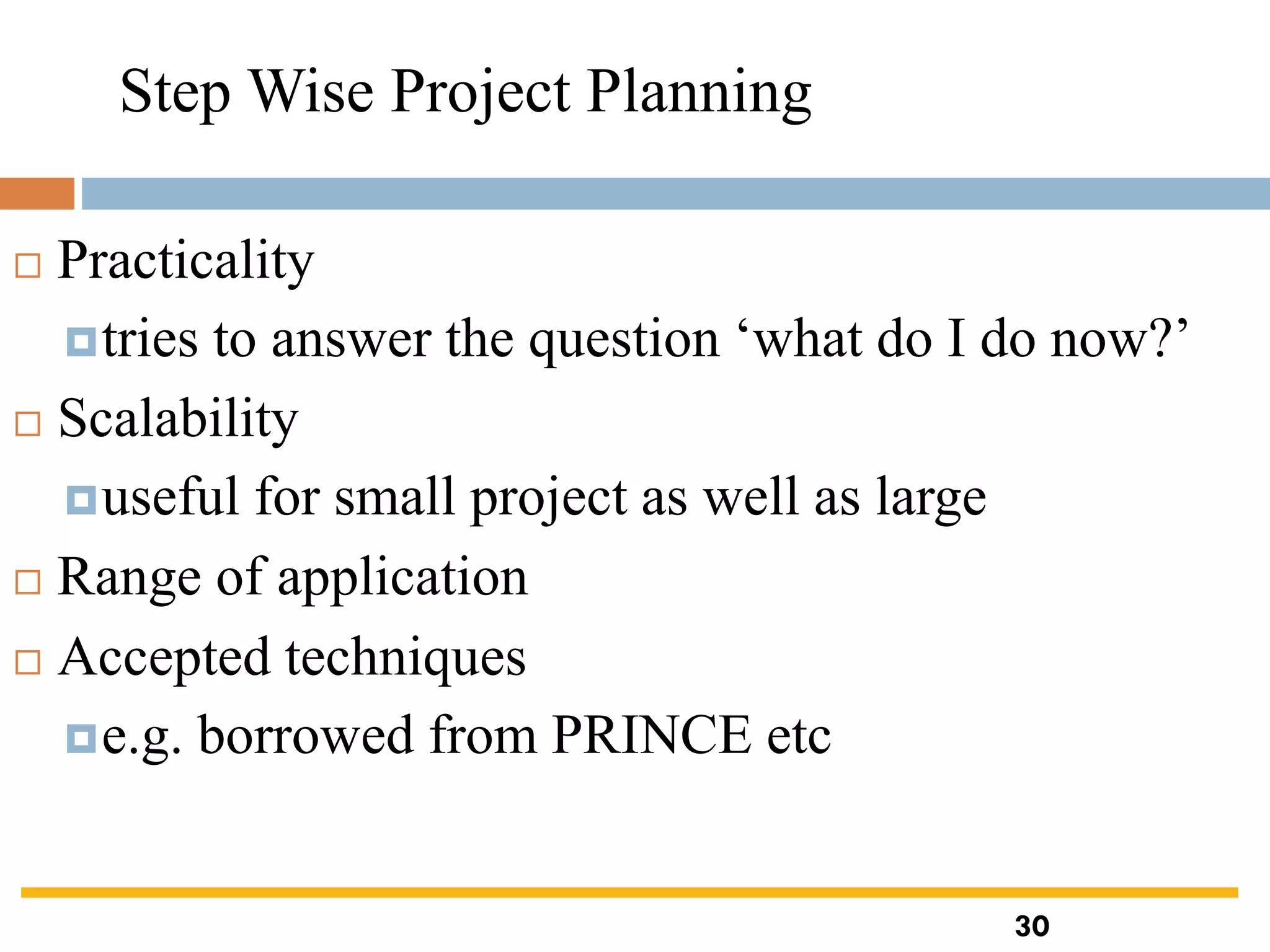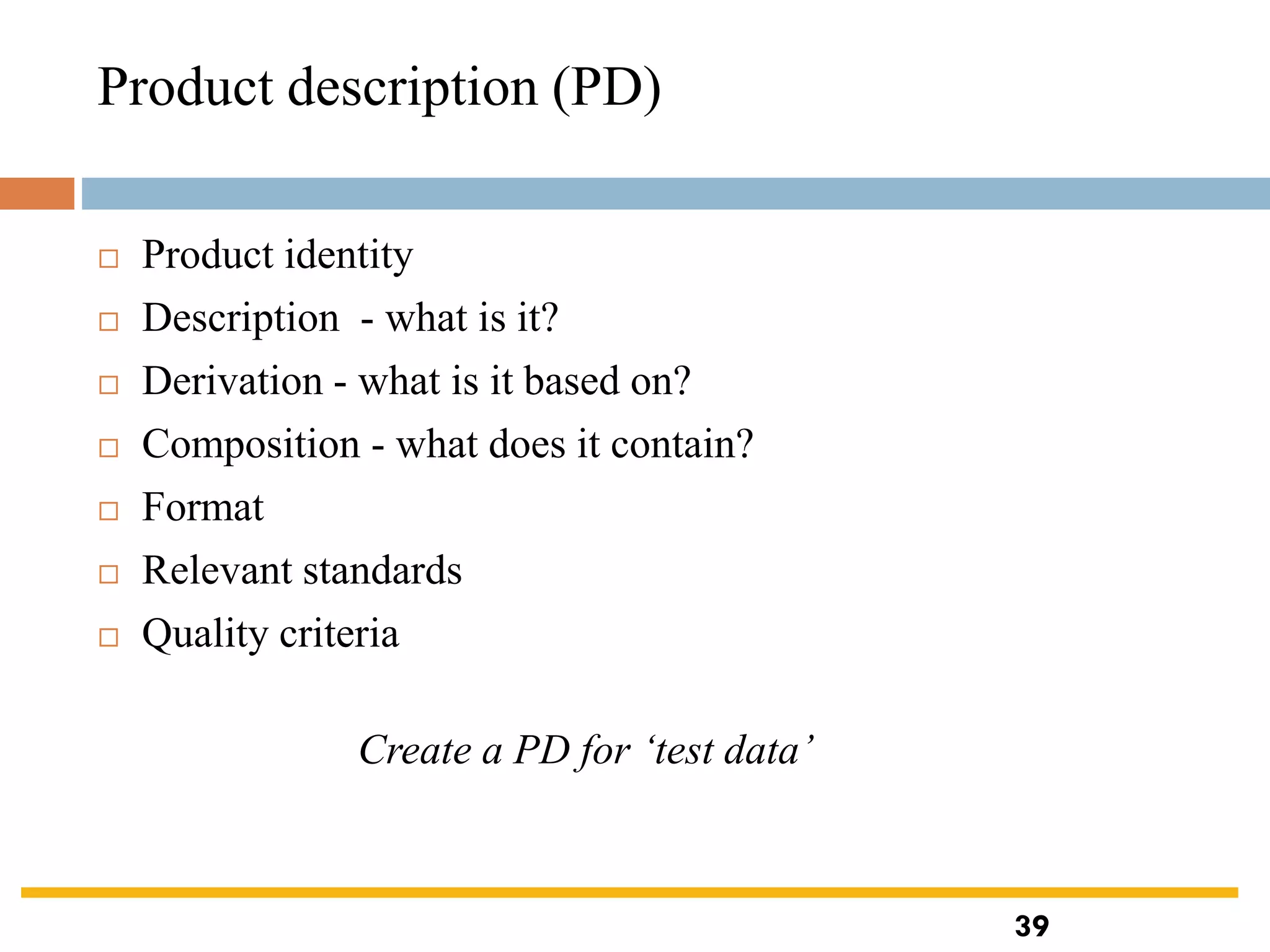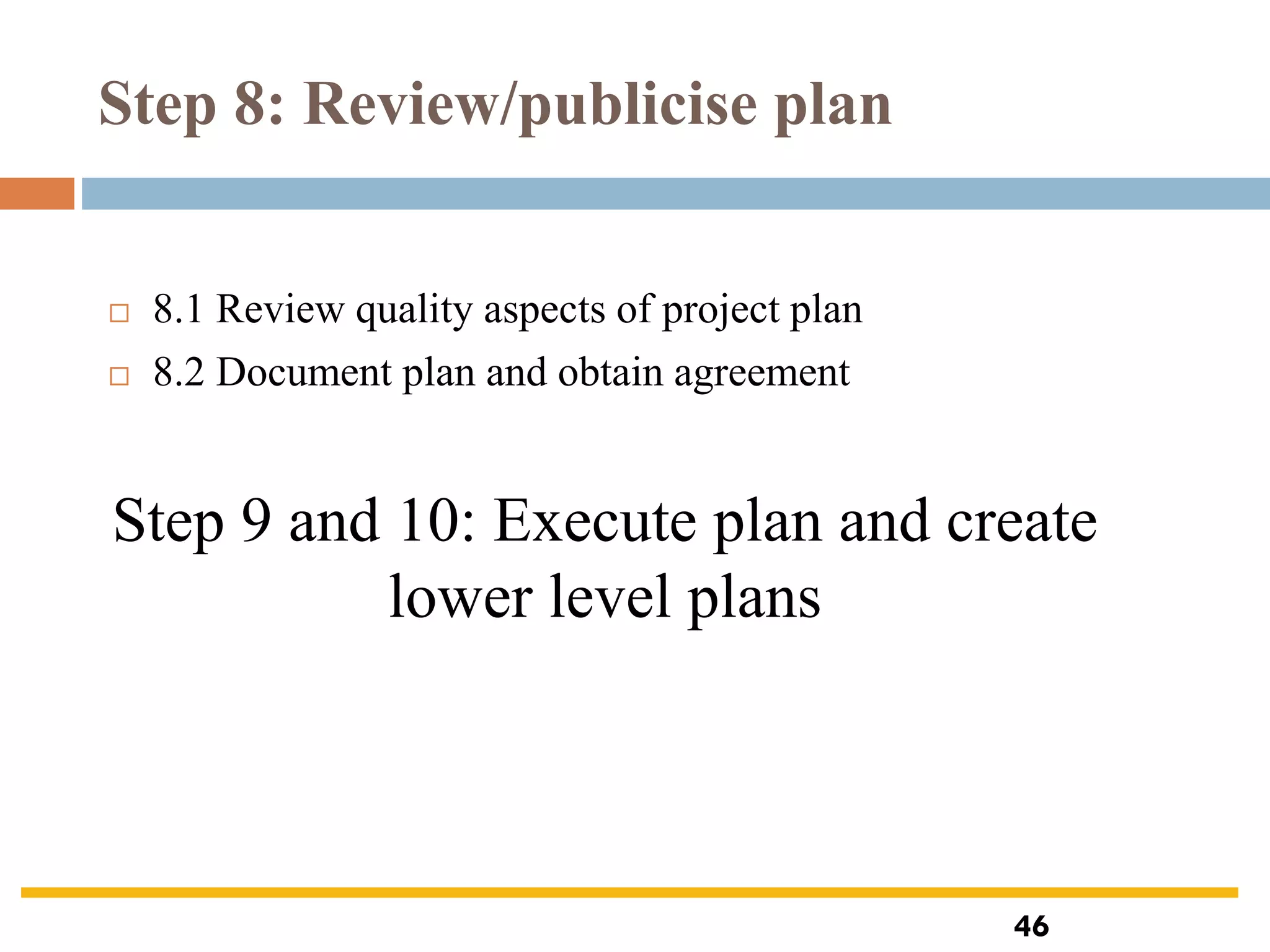The document outlines key concepts of software project management, focusing on evaluation, planning, and execution of projects. It discusses the characteristics of projects, differences between software projects and other types, methodologies for risk assessment, and categorization of project types. Additionally, it emphasizes the importance of setting SMART objectives, conducting cost-benefit analysis, and the roles of program and project managers in delivering successful outcomes.

